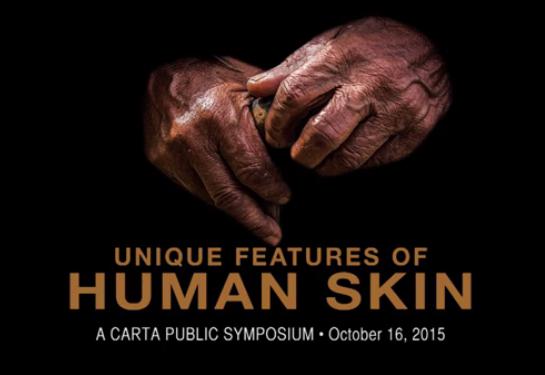Unique Features of Human Skin
The skin is the major interface between the human body and its environment. It supports diverse and complex functions from protection to vitamin photosynthesis, thermoregulation, and communication. Although the structure and function of human skin have been well characterized, the evolution of human skin remains inadequately understood. Great strides have been realized in the study of the evolution of skin pigmentation, but the evolution of functional nakedness, humans' prodigious ability to sweat, and the origins of the human breast (the body's largest modified sweat gland) are still largely matters of conjecture. The skin's microbiome is emerging as one of most important factors in maintaining barrier functions, but much remains to be discovered about its diversity and roles in health and disease. How can the many gaps in our knowledge of the evolution of human skin be closed? This symposium will bring together scientists representing evolutionary biology, genetics, dermatology, anthropology, and physiology to share their knowledge and questions about human skin in an explicitly evolutionary framework. (from carta.anthropogeny.org)
 |
1. Skin, a Window Into the Evolution of the Human Super-Organism
This presentation by UC San Diego's Richard Gallo provides an overview of the multiple cell types, both human and microbial, that comprise the human skin super-organism.
2. The Genetics of Skin Pigmentation
Mark Shriver of Pennsylvania State University explains in this talk how evolutionary approaches to understanding which genes affect pigmentation can provide important insights into both normal development and pathophysiology.
3. The Skin and Ultraviolet Radiation: Effects on DNA and Carcinogenesis
James Cleaver of UC San Francisco shares some surprising results from studies of mutagenesis from UV light in two hereditary syndromes.
4. Human Skin: Sweating, Thermoregulation, and Water Balance
This talk by Michael Sawka of Georgia Tech examines the role of skin in human thermoregulation as a potentially important evolutionary factor for modern man.
5. Ecology and Evolution of the Skin Microbiome
UC San Diego's Rob Knight describes some of the functions of the human skin microbiome, how it and its complex chemical repertoire differ from that of other animals that have been studied, ...
6. Of Lice and Men: The Molecular Evolution of Human Lice
Mark Stoneking of the Max Planck Institute explains in this talk how studying the molecular evolution of the three types of human lice (head louse, body louse, pubic louse) can reflect important developments of human evolution.
7. Subcutaneous Fat in Humans
Chris Kuzawa (Northwestern Uni) argues that human body fat co-evolved not just with the energetically-demanding and vulnerable brain, but also with the cultural strategies that humans use to buffer offspring intake.
8. Evolution of Hair Follicles, Mammary Glands, and Sweat Glands in Humans and Other Mammals
Sarah Millar of the University of Pennsylvania summarizes our current state of knowledge of the molecular events that control hair follicle, mammary gland and sweat gland development.
9. Naked, Colorful Skin and Its Role in Human Social Interactions
The evolution of mostly naked skin in the human lineage heralded major changes in the biological and social functions of skin.
| Related Links |
| Evolve: Skin From the delicate membranes that encased the earliest animals to the leathery hides that protected the dinosaurs, this episode looks at how skin has changed and adapted to virtually any challenge it has faced throughout history. |
| Walking with Cavemen This is a four-part BBC documentary series narrated by Robert Winston, about the story of human evolution from Australopithecus afarensis to Homo sapiens. |
| Origins of Us This is a BBC documentary series presented by Dr. Alice Roberts, showing how we evolved away from our ape cousins to become the adaptable, successful species we are today. |
| The Upright Ape: Bipedalism and Human Origins Why are we the only two-legged creature to develop an exclusively upright gait? And what did it mean to the development of the human species? |
| Becoming Human: Unearthing Our Earliest Ancestors This is a three-part NOVA's documentary series investigating the recent discoveries transforming our understanding of our human origins. |
| Origins of Genus Homo This explores evidence bearing on the emergence of our genus, focusing on possible antecedents to Homo, changes in diet and body form as Australopithecus evolved toward Homo, ancient species within the genus, and evolutionary processes. |
| The Evolution of Human Biodiversity This is a series of videos on the evolution of human biodiversity from CARTA (Center for Academic Research & Training in Anthropogeny). |
| The Incredible Human Journey This is a BBC documentary series presented by Alice Roberts, explaining the evidence for the theory of early human migrations out of Africa and subsequently around the world. |